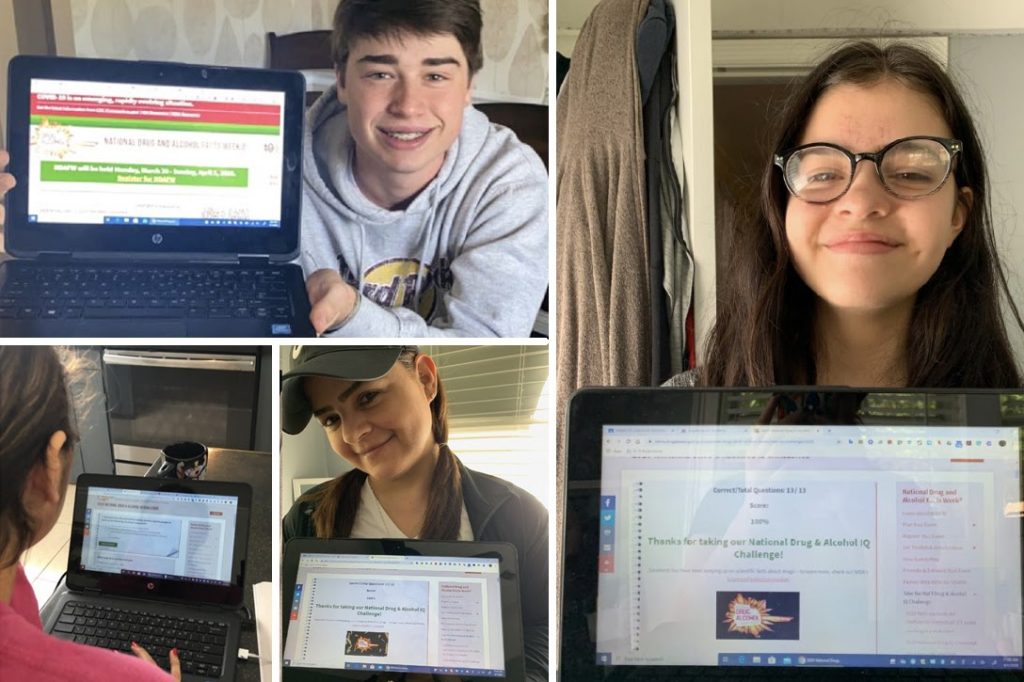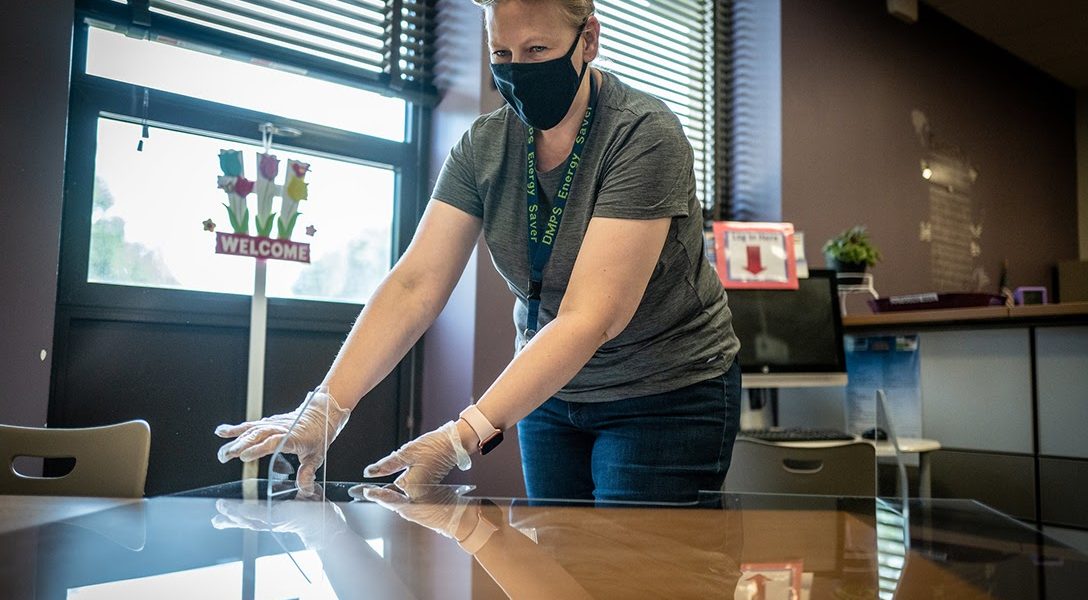I know that distance learning isn’t perfect. But at least it doesn’t kill children.
Before the COVID-19 pandemic reached fever pitch, I was on the edge of burnout. Teaching is a stressful job. Preparing and delivering engaging lessons while also keeping up with administrative documentation, classroom management, and teacher evaluations is a lot of work.
I love my students dearly. But stress takes its toll. Managing my high school world history class, my journalism graduate program, and my personal cocktail of anxiety and depression was a juggling act I desperately needed a break from. Spring break couldn’t come soon enough.
And then, as if my wish had been granted by a cruel genie, I got way more spring break than I bargained for. In Texas, many school districts extended spring break by an additional two weeks due to COVID-19. My district was among them. At first, I was ecstatic. Then the guilt crept in. While the shutdown gave me a needed reprieve, it wasn’t good for the kids. A vast number of students were under the poverty line, and school was the only place they could get hot meals. For many other students, school was an escape from an unhappy household. It was a place they could see their friends and adults who genuinely cared about them. What would they do now with this delay? And who was I to feel happy about it?
Then the unthinkable happened. The pandemic got worse, and there was no way we could return to school. Distance learning was the new reality, and with this new reality came a slew of new, stressful challenges. Fortunately, my school district kept providing meals that students or parents could pick up, and the school tech office worked tirelessly to make sure students had laptops and hotspots for at-home learning. While all this was handled well by my school and district leadership, we were in uncharted territory. Directives from the top were unclear at best. It was up to the teachers to rework their curriculum and find a way to engage their students.
Luckily, I had already used Google Classroom for assignments prior to the pandemic, and my kids were accustomed to logging onto the platform, checking it, and using it. Other teachers who had preferred to stick with a more traditional approach were forced to start from scratch. Despite that advantage, participation was low. Less than half of my students turned in assignments, and only one or two kids regularly attended my weekly Zoom sessions. Eventually, I dropped them all together and opted for email office hours instead.
One student disappeared from Google Classroom mid-semester. When I reached out to him, he told me that he had been working laying tile to support his family because his parents had been laid off. This 15-year-old boy was now the sole breadwinner for his family.
I called regularly to check on students I hadn’t heard from. It was to no avail. Some of these students’ counselors or other teachers managed to touch base and ensure their safety, but some kids just seemed to disappear. This weighed heavily on my mind, but there wasn’t any protocol for a situation like this. All I could do was keep calling and emailing.
I did my best to help the kids I could reach. One student disappeared from Google Classroom mid-semester. When I reached out to him, he told me that he had been working laying tile to support his family because his parents had been laid off. This 15-year-old boy was now the sole breadwinner for his family. Of course, Ms. Bennett’s world history assignments were the furthest thing from his mind, but he still wanted to pass the class. I extended all of his deadlines with no late penalty, and he ended up earning an A. I still wish there was more that I could have done.
However, despite all of these challenges, my stress level was still significantly lower than it had been prior to spring break. Many of the small daily stresses that came from work were gone. I didn’t have to commute, I didn’t have to fight a single student to put away a phone, or worry that an administrator might come into my room and judge my performance based on watching one of my lessons for five minutes. Many of the smaller obstacles had been removed, and I could focus on teaching the students that wanted to learn. I’ll admit that I enjoyed the experience. That enjoyment was still accompanied by a sickening amount of guilt, but I enjoyed it nonetheless.
I felt refreshed and recharged. Figuring out how to rework my lessons even presented an amusing enough challenge to reignite my passion for teaching — something that had been dangerously close to burning out. My therapist even noticed that with many of my daily obstacles out of the way, I was able to clear my mind and focus on what was truly important: my mental health. How could I help others when I was in such a dark place myself?
Although distance learning certainly has many rocky aspects, I was largely looking forward to continuing and perfecting the process during the 2020-2021 school year. Or better yet, exploring a hybrid learning environment that incorporated both in-person and distance learning to suit each student’s unique needs. As July rolled around, however, teachers across the state of Texas learned that this was a far cry from reality.

The Texas state government followed the president’s lead and made it clear that it was prepared to force the reopening of the state’s public schools even though COVID-19 cases have skyrocketed since the schools shut down in March. Many schools plan to be fully open within the month.
The plan, if I can even call it that, is this: Parents will get to decide whether their children will participate in distance learning or in-person learning, and schools will have to accommodate their decision. School districts will only be allowed to delay the start of in-person learning for two weeks. After that time, the state will revoke funding for schools that do not engage in in-person teaching. We have been forced into a corner.
I felt my level of anxiety, which had largely been held at bay since the initial shutdown, begin to skyrocket. There were so many unknowns, just as there had been before, only this time they involved life or death.
Even if I catch COVID-19, I know that I will probably recover. My main concern is the people I would end up exposing. Every single student I come in contact with would be at risk. Some of them already have underlying health conditions. Every person they see after coming in contact with me, including other students, teachers, and their families, would also be in danger. Every teacher I work with would also be at risk, especially several coworkers who are over the age of 50. My two roommates would be at risk, as well as anyone they come in contact with at their places of work, since they are both essential employees. I’ve already had to discuss establishing a long-distance relationship with my boyfriend despite the fact that he lives only 15 minutes away from me. I cannot put him at risk. I won’t be able to see my parents, either. My mother is immunocompromised, and my dad is over 60.
Has Trump Backer and Education Czar Betsy DeVos Gone Too Far?
Nobody at any level of state leadership seems concerned with keeping us or the children we are expected to teach safe. How can we maintain social distance when more than 1,000 kids are rushing to class in the hallways? How are we supposed to deal with children who cannot be expected to wear masks at lunch? How are we going to be able to sanitize our classrooms after each class — for some teachers, as many as eight times a day? When will we have time to teach? What happens when teachers and students begin to get sick? What will happen — not if, but when — they die? These are the questions that race through my mind. I know that I am not alone.
I know that distance learning isn’t perfect. But at least it does not kill children, and mandating in-person learning, irrespective of the risk, is not the answer. My life, the lives of my fellow teachers, and the lives of our students, are being politicized. How many of us will have to die before the “plan” changes? This is the question we need to be asking. The question that has caused me more than one panic attack, and that has resulted in both tears and vomiting. No answer to that question will put my mind at ease, or that of any teacher. The only acceptable answer is to not even ask the question.
Lindsay Bennett, a writer and high school teacher in Irving, TX, is an apprentice in WhoWhatWhy’s Mentor-Apprentice Program. This story is part of our ongoing series, Tested, which examines the challenges and opportunities the coronavirus pandemic poses for the US education system on all levels.
Related front page panorama photo credit: Adapted by WhoWhatWhy from Nenad Stojkovic / Flickr (CC BY 2.0) and Milwaukee Teachers’ Education Association (MTEA) / Flickr (CC BY-NC 2.0) and Dystopos / Flickr (CC BY-NC 2.0).



